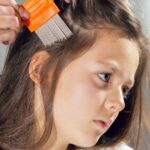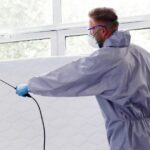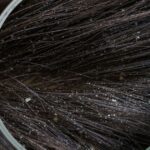Navigating the world of lice is rarely a highlight in anyone’s life, yet it’s an experience many of us encounter, especially if we have school-aged children. While the mere mention of lice may make your skin crawl, being well-informed can turn a potential nightmare into a manageable situation. One of the first and most crucial steps in handling a lice infestation is correctly identifying the tiny invaders, often with the help of a fine-toothed comb. In this blog post, we’ll delve deep into the intricacies of what lice and their eggs actually look like on a comb—your frontline tool in the battle against these stubborn pests. Armed with this knowledge, you’ll be better equipped to tackle the issue head-on, no pun intended.
Table of Contents
How To Identify Head Lice
In order to accurately determine if you have head lice or not, you’ll need to have a good idea of what they look like. The appearance of lice and their eggs is a crucial factor in their accurate identification, so it’s important to delve into the details:
Adults: Adult head lice have a somewhat flattened, elongated body that is usually about 2-3 mm in length. Their color can range from tan to grayish-white. However, the color may change after they feed, becoming darker due to ingested blood. Adult lice have six legs, each equipped with hook-like claws at the end. These claws are specialized to cling tightly to human hair, which is why they are usually found close to the scalp. They can sometimes look like tiny moving specks against a light background, such as a comb, which can make them easy to miss if you’re not specifically looking for them. Their size and color often allow them to blend in with hair, so seeing them clearly can be a challenge without adequate lighting and focus.
Nymphs: Nymphs are immature lice that have yet to reach the adult stage. They resemble adult lice but are smaller in size. A nymph goes through three stages before becoming an adult louse, shedding its exoskeleton at each stage—much like how a snake sheds its skin. At each stage, they are slightly larger, but their general appearance remains the same: six-legged and tan to grayish-white in color.
Nits: Nits are the eggs laid by adult female lice. They are oval and about 0.8 mm long and 0.3 mm wide. Nits are often yellowish or white but can sometimes appear darker. They are glued to the hair shaft close to the scalp by a substance secreted by the female louse. This glue-like substance is quite strong, making nits notoriously difficult to remove. They’re usually found within 1.5 cm from the scalp to maintain the optimal temperature for incubation. If you’re inspecting a comb, the nits will often appear as uniform, tiny, and oval-shaped specs that adhere strongly to strands of hair.
On a Comb: What do lice look like on a comb? When using a specialized lice comb with closely spaced teeth, both adult lice and nits may become trapped between the teeth. They will usually be found clinging to the hair strands caught in the comb. The adult lice may even be seen moving between the teeth. Nits, on the other hand, will seem like they are “glued” to the hair strands and won’t easily flick off.
Conditions That Look Like Lice
The topic of conditions that resemble lice infestations is an important one, as misidentifying these conditions can lead to unnecessary stress and the wrong course of treatment. Here’s a more detailed look into conditions that can often be mistaken for lice:
Dandruff: Dandruff consists of flakes of skin that detach from the scalp. Unlike nits, dandruff flakes are not glued to the hair shaft and can usually be easily brushed away. Additionally, dandruff is generally accompanied by an itchy scalp but not by the sensation of something crawling on your head, a symptom common in lice infestations.
Hair Spray or Gel Residue: Styling products can sometimes leave behind residue that sticks to hair strands, resembling nits at first glance. One distinguishing factor is that this residue will often be present along the length of the hair strand, not just close to the scalp like nits. Also, they can be easily removed, unlike the stubbornly glued nits.
Dry Scalp: In contrast to dandruff, dry scalp results in smaller, less oily flakes. These can be mistaken for nits but are easily differentiated when inspected closely. They don’t have the same oval shape and rigid structure that nits do and can be easily brushed away.
Other Insects: Occasionally, other tiny insects like fleas or even sand fleas might find their way into the hair. While these may cause similar itching symptoms, their physical characteristics are markedly different from lice. Fleas, for example, have a more rounded and dark-colored appearance and can jump—traits not observed in lice.
Other Symptoms
While the physical identification of lice and nits is an essential part of diagnosis, the symptoms associated with a lice infestation can serve as valuable preliminary indicators. Here’s an expanded look at the array of symptoms you might encounter:
Itching: This is the most common symptom associated with lice infestation. The itching is caused by an allergic reaction to lice bites and their saliva, and it usually intensifies the longer the infestation goes untreated. It’s important to note that not everyone experiences itching, particularly when the infestation is mild or just beginning.
Red Bumps and Sores: In more severe cases or as a result of persistent scratching, small red bumps may develop on the scalp, neck, and near the ears. Continuous scratching of these areas may lead to open sores and increase the risk of secondary bacterial infections.
Tickling Sensation: Some people report feeling a tickling sensation or as though something is moving on their scalp. This can often manifest as a more generalized feeling of discomfort or irritation, rather than localized itching.
Irritability and Sleep Difficulties: Lice are more active in the dark, which may lead to disturbed sleep. The itching and the sensation of something crawling on the scalp can make it difficult to fall asleep, leading to irritability and a lack of focus during daytime activities.
Swollen Lymph Nodes: In rare cases, especially when a secondary bacterial infection has occurred due to scratching, swollen lymph nodes may develop in the neck area.
The Lice Clinics
While self-identification and tips for over-the-counter treatments are abundant on the Internet, there’s no substitute for professional lice removal by a medical professional. The Lice Clinics in Greenville, Anderson, and Spartanburg, SC offer 100% guaranteed lice removal with their proprietary Lice Tech treatment, along with a variety of other treatments and tips to help you with head lice prevention and infestations. For more information, please visit our website or contact one of our clinics to schedule your appointment today.



